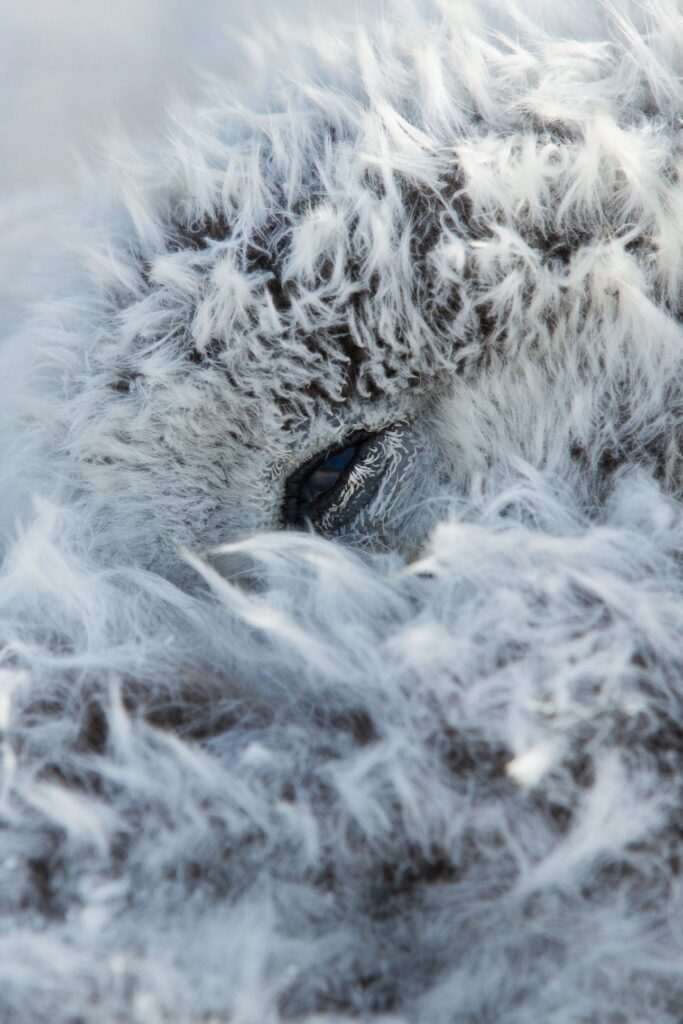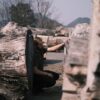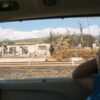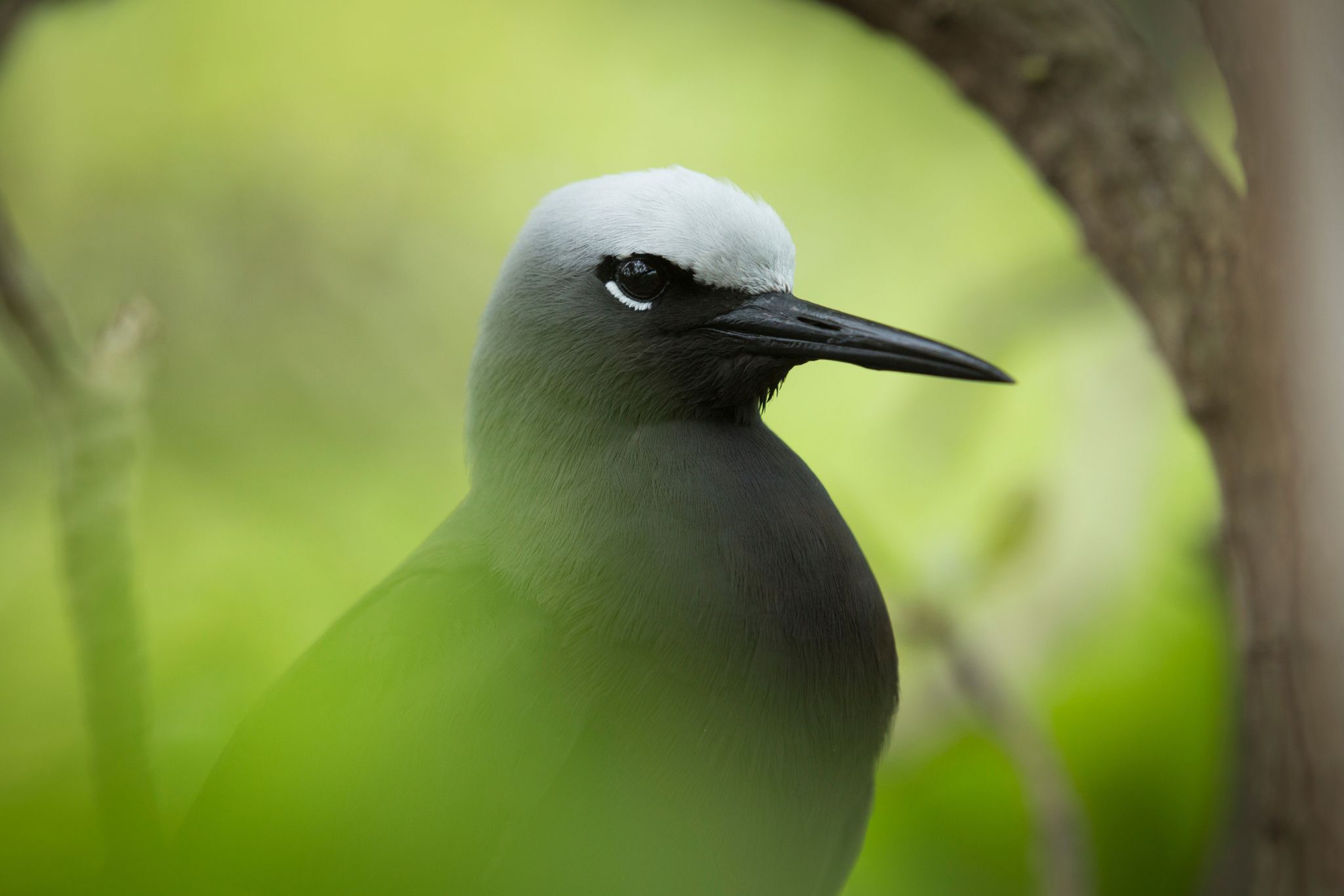Text and Images by Zachary Pezzillo
Kure Atoll, also known as Hōlanikū or Mokupāpapa, is the furthest northwest of the Northwestern Hawaiian Islands and the Papahānaumokuākea Marine National Monument. It is the most northerly atoll in the world, lying roughly 1,400 miles northwest of O‘ahu. The remnant of an ancient volcano, the atoll has a circular reef that is at most six miles in diameter. I am standing on the atoll’s only island, a small, crescent-shaped spit of land totaling a mere third of a square mile in size, ringed by a continuous stretch of brilliant white sand.
Bordering the beaches are dense, tangled shrubs of naupaka, some of which reach more than 10 feet high. In the center is an open, grassy plain dotted with kawelu, a native bunch grass. The island is quite flat, the highest point being roughly 20 feet above sea level. Kure is populated only by the hundreds of thousands of seabirds that come here each year to mate and raise their young, along with Hawaiian monk seals, green sea turtles, and other marine species.

Over the past 200 years or so, humans have left their mark on this avian utopia, bringing with them invasive plants, insects, and diseases from other parts of the world that choked out the native flora, causing the populations of native fauna to plummet. Every day the wildlife here struggle to survive amid the ever-encroaching hands of humankind. Albatross feed their chicks plastic they mistook for food while foraging on the open ocean. Netting and other debris cast aside by fishermen entangle critically endangered Hawaiian monk seals. Invasive plants that have naturalized themselves threaten the nesting habitat of the atoll’s native seabirds. As I look over the island from the top of the dune, I try to imagine the pristine paradise it once was, a truly native island where wildlife thrived in perfect balance of give and take.
The State of Hawai‘i Department of Land and Natural Resources’ Division of Forestry and Wildlife established remote field camps on the island 25 years ago. The goal of the division, now supported by the Kure Atoll Conservancy, is to restore Kure Atoll as close to its natural state as possible, allowing its native inhabitants to thrive in a properly functioning ecosystem once again.
Small but dedicated crews of habitat restoration technicians such as myself arrive by ship after weeklong journeys by sea to spend either the winter or summer season living and working on this extremely remote outpost. There is no electricity and communication with the outside world is limited. All food and supplies are brought with crews and rain catchment is relied on for fresh water. Our days here are long and rigorous. We work to eradicate Verbesina encelioides, a tenacious and invasive plant that once covered most of the island’s open areas and made it difficult for albatross and other seabirds to successfully nest and raise their young. Thousands of pounds of trash, mostly plastic and netting, litter the island, swept in with the currents from elsewhere. Knowing it is impossible to remove it all, we focus on collecting fishing lines, nets, and other marine pollution in which birds, seals, and turtles are most likely to get tangled.


We are heartened when we see the results of this collective work, both ours and of the decades of crew before us. Native plants are returning in areas that were once entirely covered in weeds, creating a better habitat for the island’s avian inhabitants and making it possible for future generations of seabirds to exist. When birds and seals become caught in detritus that has made it to our shores, we free them from it and, in doing so, are rewarded by the knowledge that we have saved lives. By restoring and maintaining diversity among this isolated ecosystem, we are helping the much larger and more global ecosystem to function and thrive.
When I first arrived, I was told by members of the departing crew that Kure would change me. It has. Life here is incredibly simple, profoundly uncomplicated, and dictated almost entirely by nature. The absence of the constant thrum of noise associated with the outside world affords a sort of clear-headedness that doesn’t exist elsewhere. The ability to focus becomes intensified and even exhilarating. Learning and adapting to ever-changing conditions and circumstances becomes almost instinctual. Here, we learn to make do with what we have on hand; anything more is considered unnecessary and even frivolous. When the trivial aspects of our lives slip away, we are left with profound appreciation of the importance of family and friends.

I will miss Kure and all the unique and quirky creatures that call it home: the stunningly graceful fairy terns whose tendency to lay their solitary eggs in the most precarious of spots defies gravity and common sense; the wild enthusiasm of the male ‘iwa birds, warbling loudly, their heads thrown back and their bright crimson gular pouches fully inflated while desperately trying to keep from falling off their perches in the naupaka; and finally, the mighty mōlī, whose regal presences reminds us daily of the importance of our work.
I will miss being at the mercy of the rawness and strength of nature’s elements and the extreme isolation that is difficult to find anywhere else. I will miss the moments that define our time here and the camaraderie forged from sharing these experiences. Memories tend to fade with time, but knowing that, in my own small way, I have contributed to preserving this remarkable place is an undeniable honor that will remain with me always.





